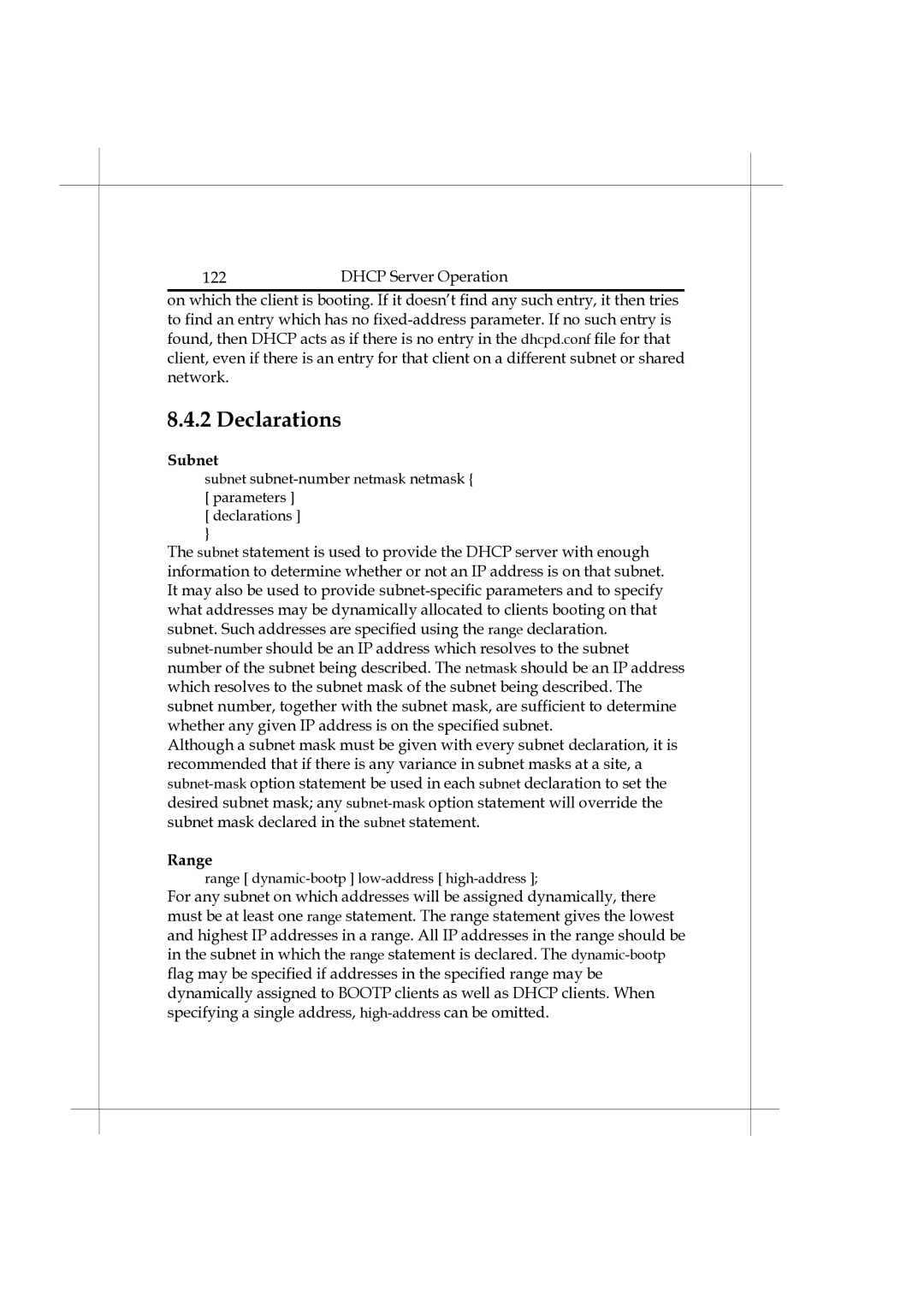on which the client is booting. If it doesn’t find any such entry, it then tries to find an entry which has no fixed-address parameter. If no such entry is found, then DHCP acts as if there is no entry in the dhcpd.conf file for that client, even if there is an entry for that client on a different subnet or shared network.
8.4.2 Declarations
Subnet
subnet subnet-number netmask netmask { [ parameters ]
[ declarations ]
}
The subnet statement is used to provide the DHCP server with enough information to determine whether or not an IP address is on that subnet. It may also be used to provide subnet-specific parameters and to specify what addresses may be dynamically allocated to clients booting on that subnet. Such addresses are specified using the range declaration. subnet-numbershould be an IP address which resolves to the subnet number of the subnet being described. The netmask should be an IP address which resolves to the subnet mask of the subnet being described. The subnet number, together with the subnet mask, are sufficient to determine whether any given IP address is on the specified subnet.
Although a subnet mask must be given with every subnet declaration, it is recommended that if there is any variance in subnet masks at a site, a subnet-maskoption statement be used in each subnet declaration to set the desired subnet mask; any subnet-maskoption statement will override the subnet mask declared in the subnet statement.
Range
range [ dynamic-bootp ] low-address [ high-address ];
For any subnet on which addresses will be assigned dynamically, there must be at least one range statement. The range statement gives the lowest and highest IP addresses in a range. All IP addresses in the range should be in the subnet in which the range statement is declared. The dynamic-bootpflag may be specified if addresses in the specified range may be dynamically assigned to BOOTP clients as well as DHCP clients. When specifying a single address, high-addresscan be omitted.

